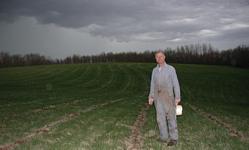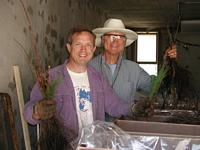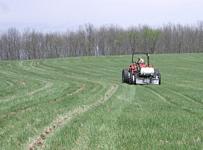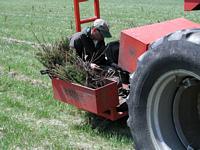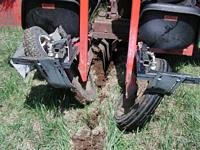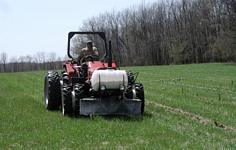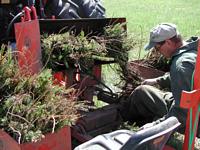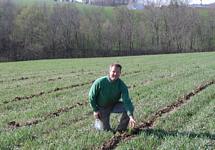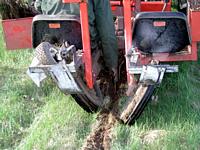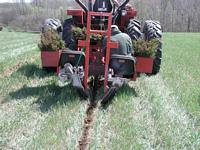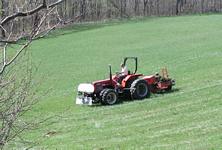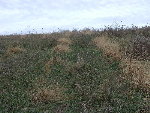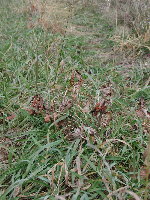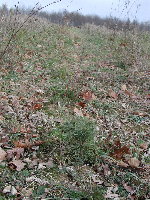May 2007 New Plantation
There are two reasons to return the land to forest. One is to increase the area of contiguous mature forest canopy. Some species of birds need LARGE areas of contiguous canopy to thrive. With the settling of America and growth of farming, much mature forest was removed and turned into fields. The second reason really is that growing hardwoods appears to be the "best" use of SW Wisconsin land. Tilling and pasturing have proven to cause excessive erosion.
Of course, the Wisconsin DNR has some great resources for reforestation planning.
Plantation Planning and Design
We selected White Oak, Red Oak, Black Cherry, Shagbark Hickory, and Yellow Birch for our hardwood species. For softwoods: White Pine, Red Pine, Tamarack, Spruce, and Hemlock. We determined we wanted a slightly dense planting of about 1000 stems per acre. We achieve that via 7 foot spacing between rows and 6 foot spacting between stems in a row. The benefits to higher density at the time of planting is better self-pruning and straighter boles.
We ordered our trees in Sept 2006 for delivery in late April 2007. The planting actually occurred in early May. We ordered trees from the Wisconsin State Nursery system and Wallace-Woodstock Nursery.
We hired Brooks and Christie Forestry to actually do the planting. They are "pros"! They plant hundreds of thousands of seedlings each year. Our project was 19600 seedlings. Jeff and Chuck work as an efficient team. They have a tractor and planter set-up that has great flotation and is optimized for what they do. They are able to spray chemical on the front and rear of the rig as appropriate.
Most plantations are put in with alternating rows of hardwoods and softwoods. Ease is the primary driver--both at the time of planting but most significantly at the time of thinning. Unfortunately, if a disease such as Oak Wilt strikes a tree in a row of oak, the entire row will likely succumb because the disease transfers easily via root contact. While not a sure-fire protection, increasing spatial diversity may help minimize or slow tree disease spread.
Brooks and Christie are used to just opening a box of seedlings and stocking the planter with bundles of all one species. To achieve our goal of increased spatial diversity, we needed to prepare mixed bundles containing all the species in the proper percentages. This took extra effort and fiddling. But we hope time shows the look and function of a highly mixed forest.
Grass Control -- First Season
Brooks and Christie Forestry applied herbicide at the time of planting. They spray only right on the row where the tees are being planted. This means a swath about 20 inches wide. The point is to reduce competition for the new seedlings--not kill everything in sight. The areas not sprayed (between rows) grow bands of thick grass that actually keeps drying winds from the row of trees.
Further, Brooks and Chrisie apply herbicide at the strength appropriate for brand new seedlings. They spray Glysophate (Roundup) on the front of the tractor and a mix of pre-emergent and root inhibitor on the back of the tractor rig. The back tank is 1/2 oz/acre of Oust and 1 Qt/acre of Princep (Simozine). Subsequent sprayings can be stronger.
During the summer, the weed control appeared "excellent". But by November, grass and weeds were returning. That's not a problem at that time of year but it shows why additional sprayings to extend grass control for the first three seasons is necessary.
The following four pictures show the state of the rows at the end of the first season. I will show follow-up pictures on the spraying page in Fall 2008 and 2009.
Click on any image for a larger jpg
Richwood Timber LLC
richwoodtimberllc (at) w9fz.com
